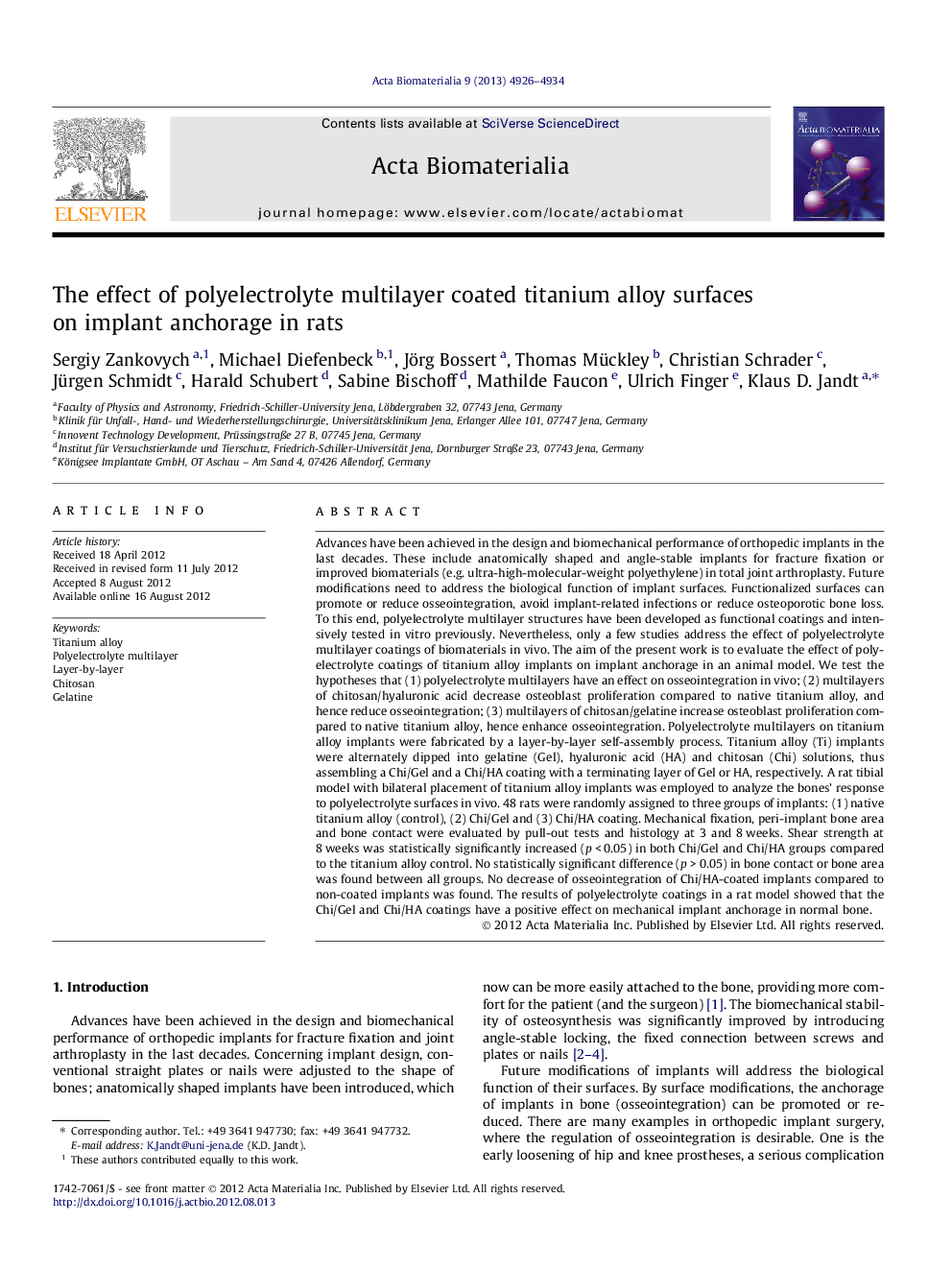| کد مقاله | کد نشریه | سال انتشار | مقاله انگلیسی | نسخه تمام متن |
|---|---|---|---|---|
| 948 | 69 | 2013 | 9 صفحه PDF | دانلود رایگان |

Advances have been achieved in the design and biomechanical performance of orthopedic implants in the last decades. These include anatomically shaped and angle-stable implants for fracture fixation or improved biomaterials (e.g. ultra-high-molecular-weight polyethylene) in total joint arthroplasty. Future modifications need to address the biological function of implant surfaces. Functionalized surfaces can promote or reduce osseointegration, avoid implant-related infections or reduce osteoporotic bone loss. To this end, polyelectrolyte multilayer structures have been developed as functional coatings and intensively tested in vitro previously. Nevertheless, only a few studies address the effect of polyelectrolyte multilayer coatings of biomaterials in vivo. The aim of the present work is to evaluate the effect of polyelectrolyte coatings of titanium alloy implants on implant anchorage in an animal model. We test the hypotheses that (1) polyelectrolyte multilayers have an effect on osseointegration in vivo; (2) multilayers of chitosan/hyaluronic acid decrease osteoblast proliferation compared to native titanium alloy, and hence reduce osseointegration; (3) multilayers of chitosan/gelatine increase osteoblast proliferation compared to native titanium alloy, hence enhance osseointegration. Polyelectrolyte multilayers on titanium alloy implants were fabricated by a layer-by-layer self-assembly process. Titanium alloy (Ti) implants were alternately dipped into gelatine (Gel), hyaluronic acid (HA) and chitosan (Chi) solutions, thus assembling a Chi/Gel and a Chi/HA coating with a terminating layer of Gel or HA, respectively. A rat tibial model with bilateral placement of titanium alloy implants was employed to analyze the bones’ response to polyelectrolyte surfaces in vivo. 48 rats were randomly assigned to three groups of implants: (1) native titanium alloy (control), (2) Chi/Gel and (3) Chi/HA coating. Mechanical fixation, peri-implant bone area and bone contact were evaluated by pull-out tests and histology at 3 and 8 weeks. Shear strength at 8 weeks was statistically significantly increased (p < 0.05) in both Chi/Gel and Chi/HA groups compared to the titanium alloy control. No statistically significant difference (p > 0.05) in bone contact or bone area was found between all groups. No decrease of osseointegration of Chi/HA-coated implants compared to non-coated implants was found. The results of polyelectrolyte coatings in a rat model showed that the Chi/Gel and Chi/HA coatings have a positive effect on mechanical implant anchorage in normal bone.
The coating of titanium alloy implants by polyelectrolyte multilayers of polysaccharides and gelatine have in a rat model a positive effect on mechanical implant anchorage in normal bone.Figure optionsDownload high-quality image (136 K)Download as PowerPoint slide
Journal: Acta Biomaterialia - Volume 9, Issue 1, January 2013, Pages 4926–4934